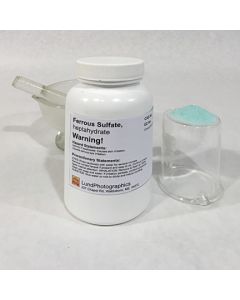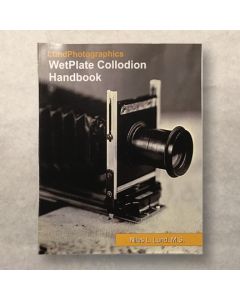Chemistry of Collodion Development
Chemistry of Collodion Development
From practical observation of the development process, we know that developing agents are able to reduce a latent photographic image to metallic silver even though the exposed silver halides show no physical evidence of the exposure.
We also know that this developing action requires the presence of free silver nitrate on the plate, along with the exposed silver halides, for the image to become visible.
In addition to this, we know that developing agents such as gallic acid, pyrogallic acid, and ferrous sulfate have a strong affinity for oxygen.
However, it's interesting to note that the silver halides forming the latent image have no oxygen associated with them for the developer to act upon.
What, then, is the process that allows an oxygen hungry developing agent to reduce a silver halide (which contains no oxygen) to silver metal?
In summary, we have:
- Free silver nitrate contains oxygen, to which the developing agent (ferrous sulfate) is attracted.
- Free silver nitrate also contains silver.
- Silver is strongly attracted to iodine.
- The bond between the silver and iodine atoms in the original silver iodide is weakened by the absorption of a photon.
To play this through, let's assume we're using a ferrous sulfate developer. When development is set into motion, the ferrous sulfate FeSO4 combines with the free silver nitrate Ag(NO3) to produce Ferric Nitrate Fe(NO3)3, Ferric Sulfate Fe2(SO4)3, and elemental Silver, Ag.
The resulting Ferric Sulfate and Ferric Nitrate play no further role in development.
The nascent metallic silver from this reaction, is attracted as rapidly as it's produced by the sub-iodide of silver (those silver iodides that form the latent image). The sub-iodide of silver, whose bond was weakened by the absorption of a photon, loses its iodine to the silver atom that originated with the silver nitrate, and this forms a new silver iodide, leaving the original atom of metallic silver as a contribution to the visible image.
Any silver iodide remaining on the plate after development is later removed during the fixing process.


